St Mary's Refuge, Dublin, Co. Dublin, Ireland
What was to become Dublin's St Mary's Refuge was established in 1821 on Mecklenburg Street (later known as Tyrone Street, now Railway Street) by Mrs Brigid Burke for 'troubled and homeless' women. A Matron was later employed to run it the institution, with a four-member lay Committee in overall control. In around 1860, additional land was purchased including a site on Gloucester Street (now Sean McDermott Street). From 1873 until February 1887, operation of the institution — by then known as then Magdalen Retreat — was conducted by the Sisters of Mercy. Its running was then handed over to the Sisters of Our Lady of Charity who also operated St Mary's Asylum at Drumcondra.
What now became known as St Mary's Refuge had its entrance at 104 Gloucester Street Lower, Dublin. The Refuge could eventually accommodate up to 150 girls and women — no age restriction was placed on those admitted. The inmates of the institution were employed in laundry work which, apart from its symbolism of cleansing and purification, generated a valuable income to help pay for the establishment's running costs.
The location of the home is shown on the 1911 map below.
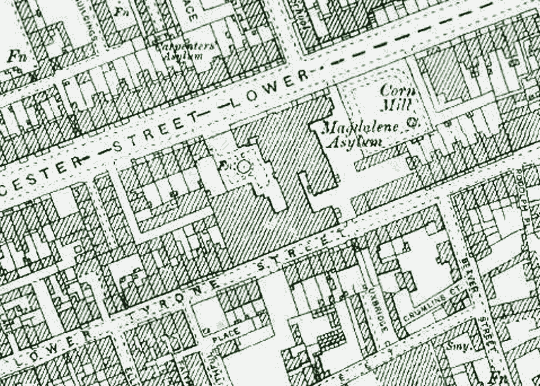
St Mary's Refuge site, Dublin, c.1911.
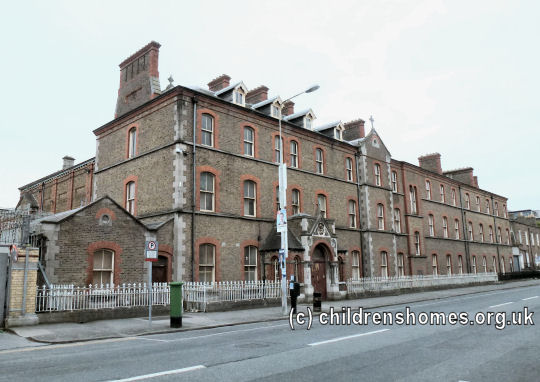
St Mary's Refuge from the north-east, Dublin, 2014. © Peter Higginbotham
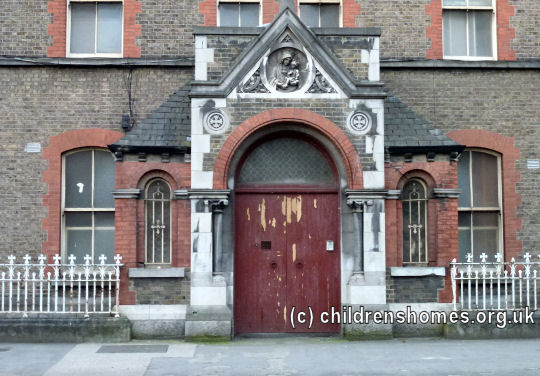
St Mary's Refuge from the north-east, Dublin, 2014. © Peter Higginbotham
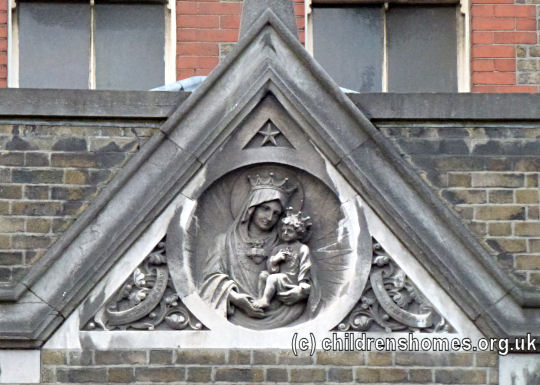
St Mary's Refuge from the north-east, Dublin, 2014. © Peter Higginbotham
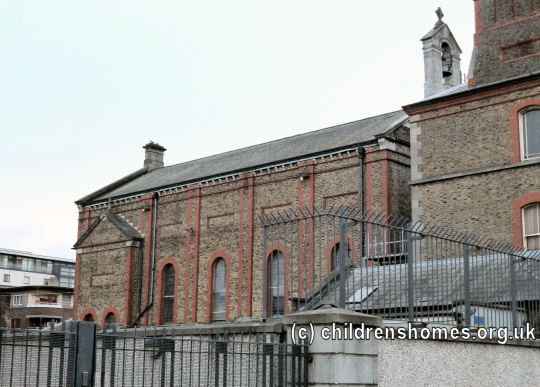
St Mary's Refuge chapel, Dublin, 2014. © Peter Higginbotham
The laundry ceased operation in 1996, the last Magdalen Laundry in Ireland to do so.
In 2103, the Report of the Inter-Departmental Committee to establish the facts of State involvement with the Magdalen Laundries included evidence from a chaplain at the Refuge in the 1960s-70s. He recalled that when he took up his post in the early 1960s, the residents were dressed in dark bottle green or black. A large number of them shared an open dormitory. Many of the women were mildly mentally handicapped, or a physical handicapped, or both and literacy was very low. He tried to improve conditions by setting up an enterprise called the Celtic Industry making cushion covers and other items from white Donegal cloth, and knitting Aran sweaters. Income from sale of the goods was used to provide the inmates with new clothes of their own choosing. The dormitories were also divided into individual cubicles. Cinema trips were introduced, as well as holiday outing and trips to Lourdes.
In 2014, the building was standing empty.
Records
Note: many repositories impose a closure period of up to 100 years for records identifying individuals. Before travelling a long distance, always check that the records you want to consult will be available.
- None identfied at present — any information welcome.
Bibliography
- The McAleese Report into Irish State involvement with the Magdalen Laundries (2013)
- Finnegan, Frances Do Penance or Perish: Magdalen Asylums in Ireland (2004, OUP)
- McCarthy, Rebecca Lea Origins of the Magdalene Laundries: An Analytical History (2010, McFarland)
- Sixsmith, Martin Philomena: The true story of a mother and the son she had to give away (2013, Pan)
- Smith, James M Ireland's Magdalen Laundries and the Nation's Architecture of Containment (2007, MUP)
- The Magdalene Sisters (DVD) (2003)
Links
Except where indicated, this page () © Peter Higginbotham. Contents may not be reproduced without permission.


